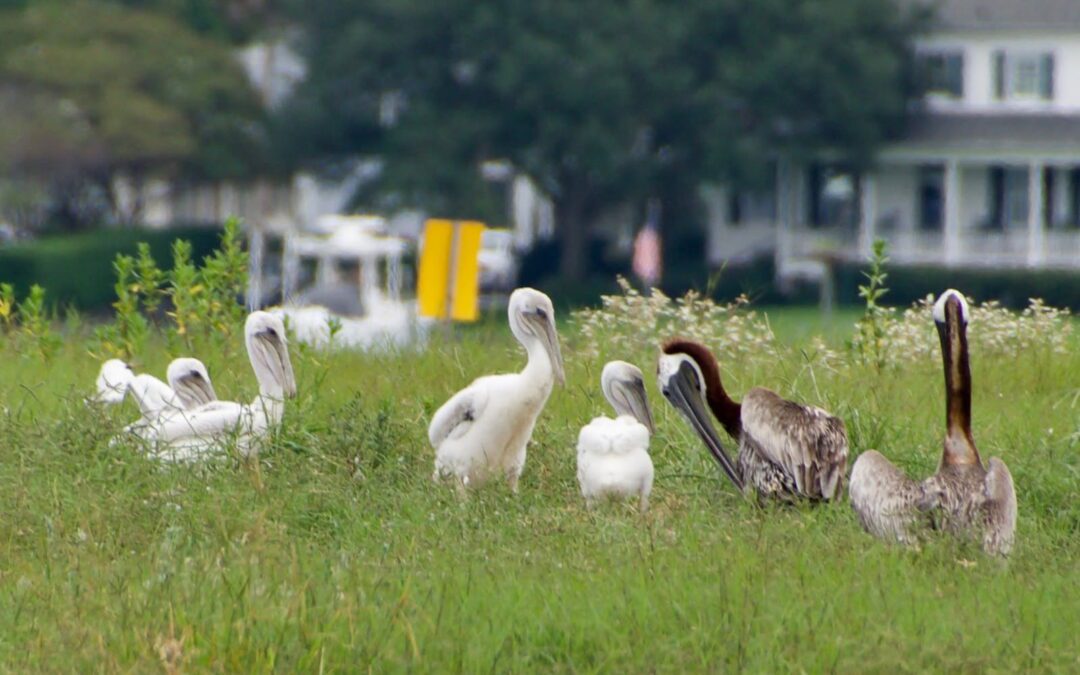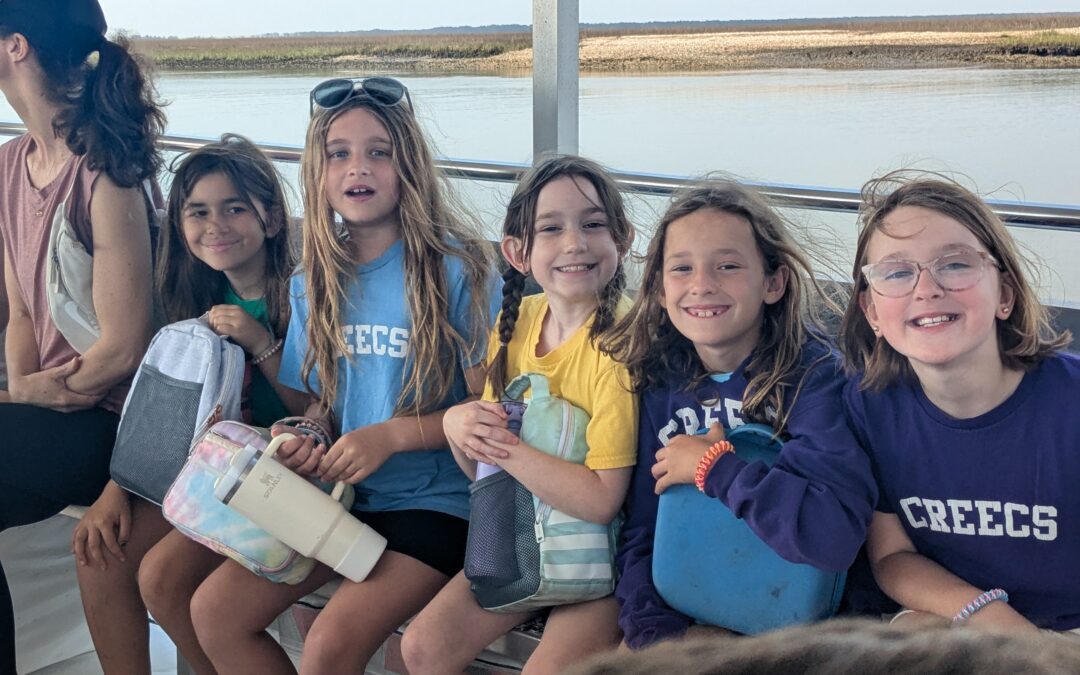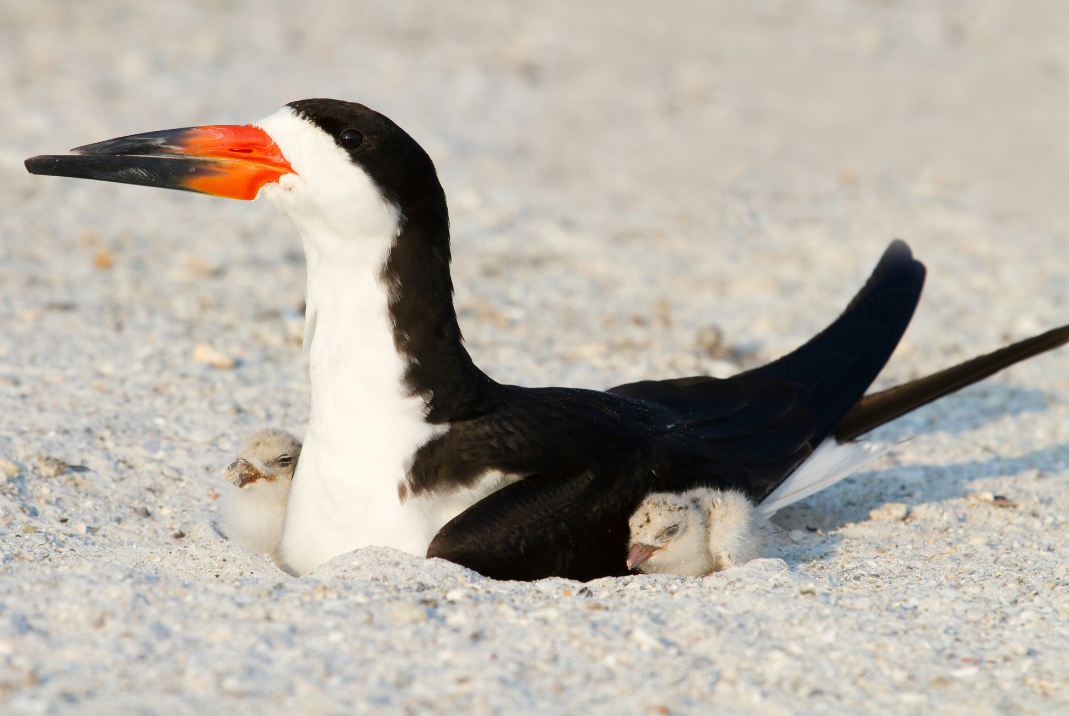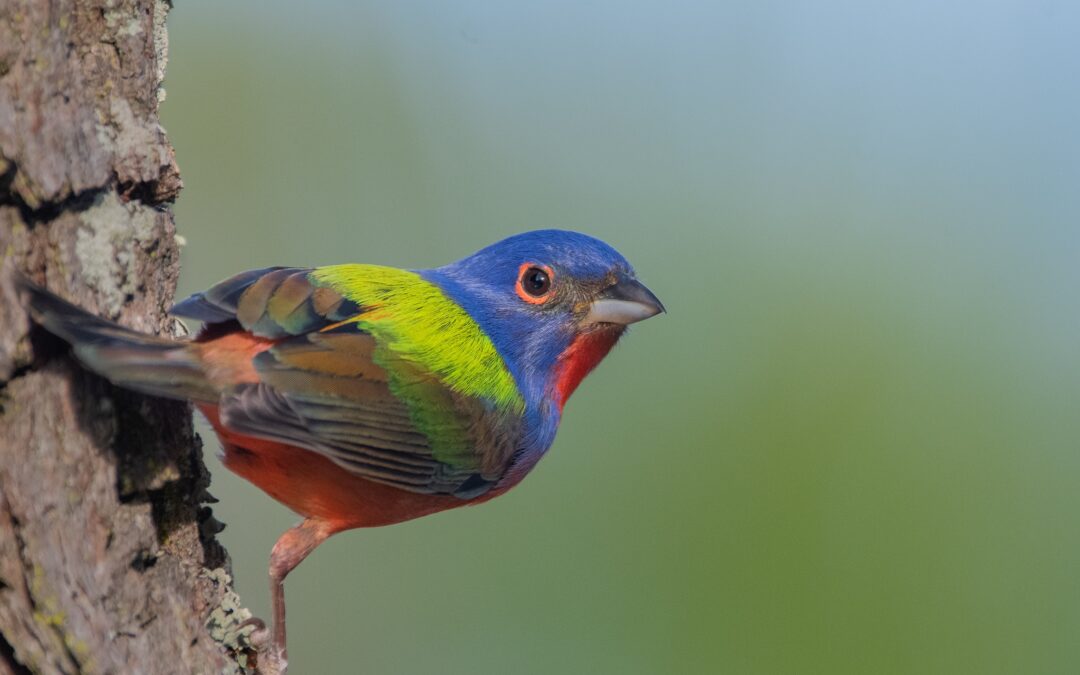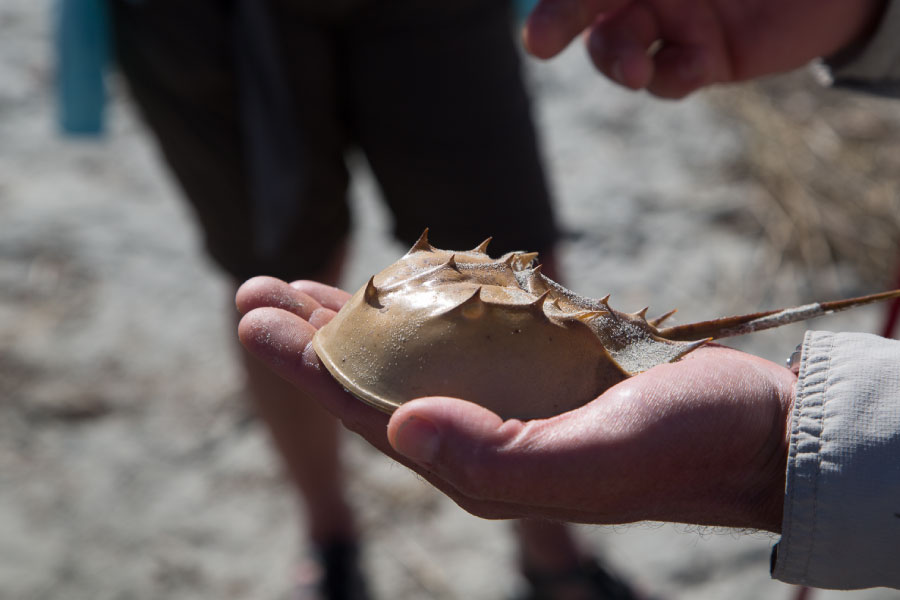GUIDEPOSTS
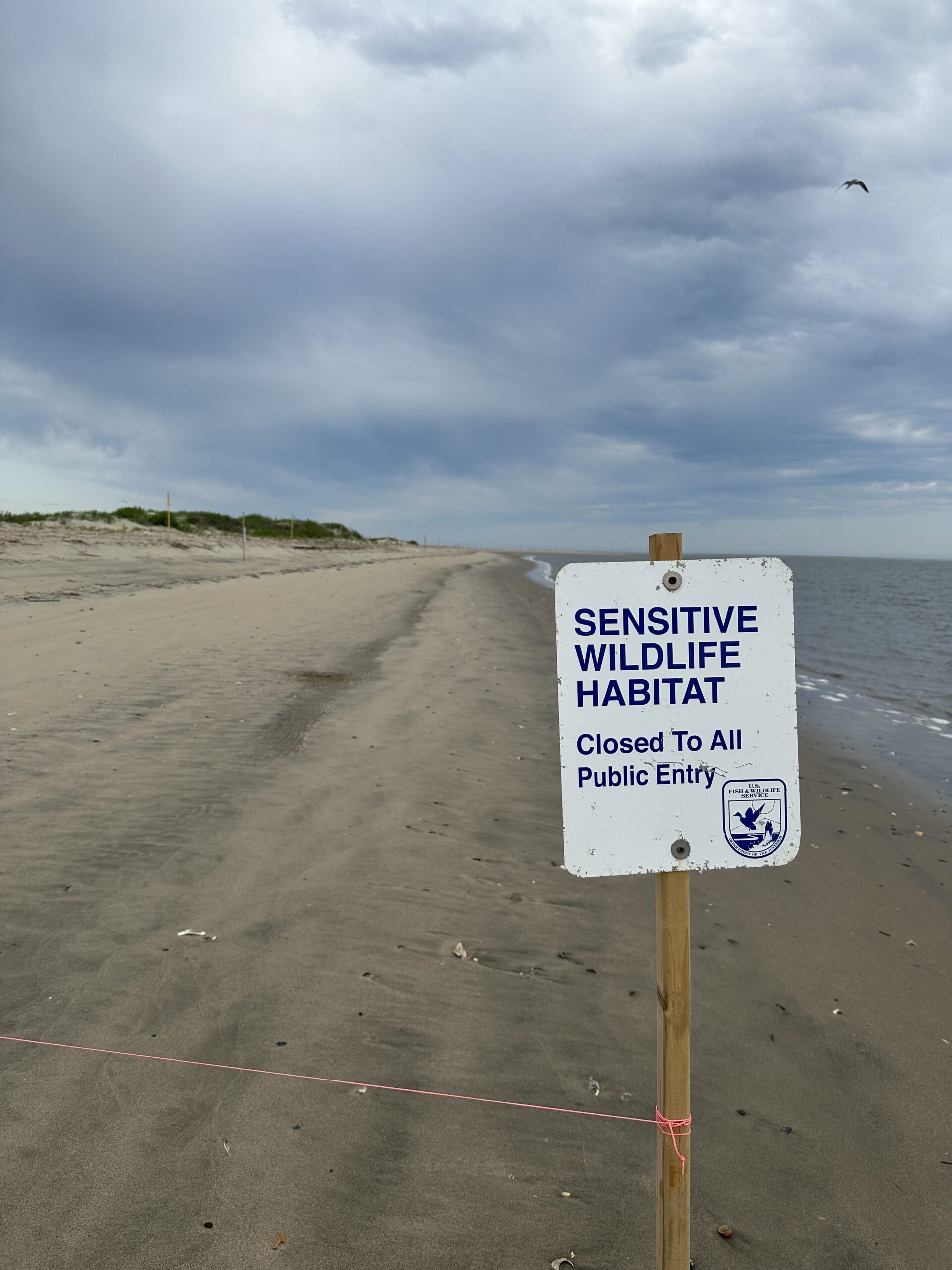
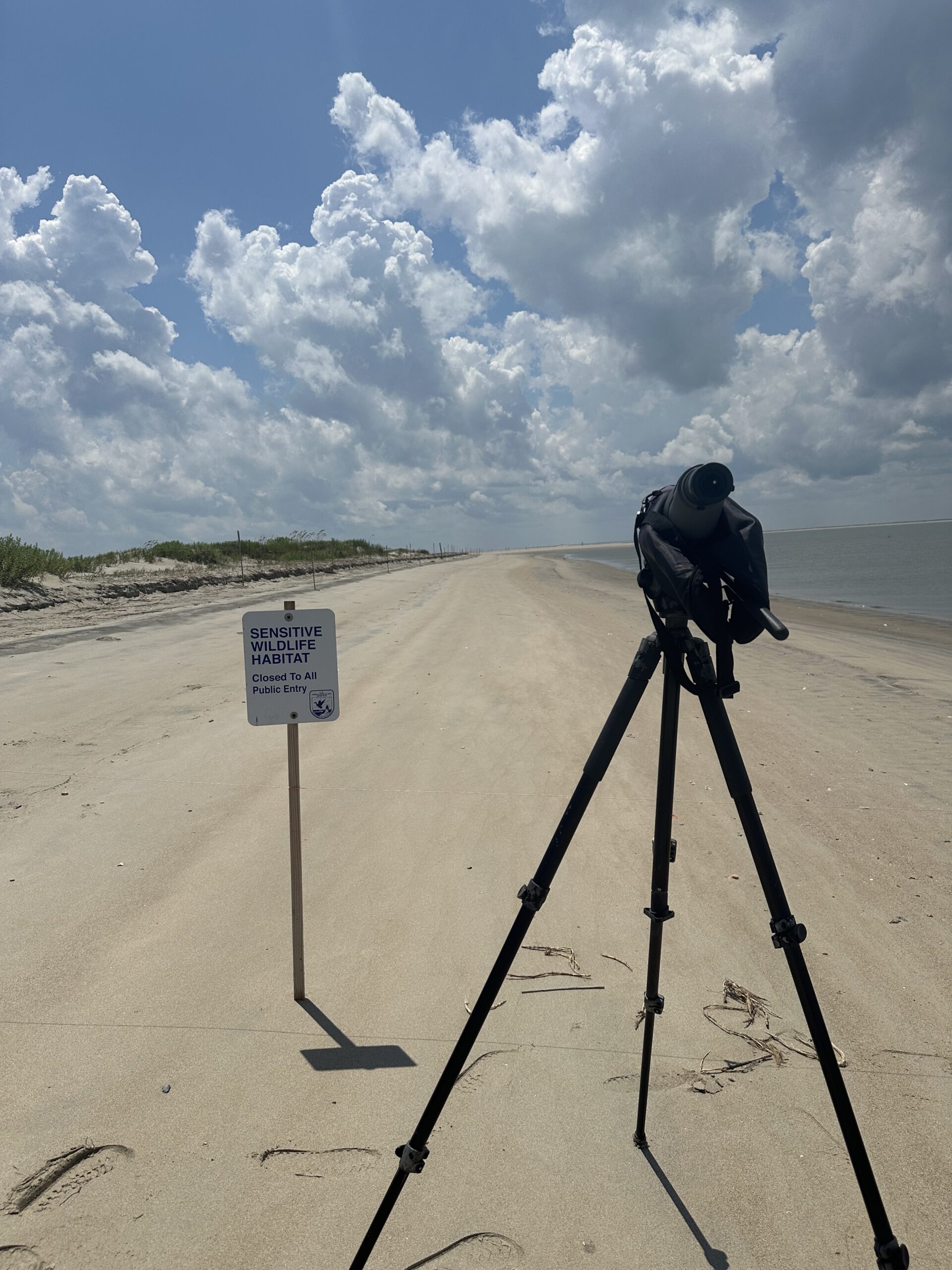
On the Front Lines of Conservation: Protecting Birds at Cape Romain
Heidi Edens, Cape Romain NWR Shorebird/Seabird Technician
October 1, 2025
When people think of the Lowcountry, their minds often drift to sea turtles nesting under moonlit skies or dolphins strand-feeding through winding salt marshes. But some of the most overlooked creatures are the ones living closest to us—running along beaches, fishing beside our boats, or gliding just overhead. Seabirds and shorebirds are constant companions on our coast, yet they often go unnoticed. Protecting them isn’t just about saving a few species—it’s about safeguarding the health of entire ecosystems. And it starts with an informed, engaged community willing to act.
My name is Heidi, and I serve as the shorebird/seabird technician at Cape Romain National Wildlife Refuge. My work focuses on protecting nesting bird colonies and raising awareness about how human activity affects these fragile sites. Cape Romain is recognized as a Western Hemisphere Shorebird Reserve Network (WHSRN) site of international importance, providing diverse habitat for a significant population of nesting and migratory birds along the East Coast. My role includes monitoring restricted areas, recording beach attendance, engaging the public, and tracking the success of our colonies.
One of the questions I’m asked most often on the beach is, “Why do these struggling bird species matter so much—and why put in so much effort for them?” The answer is simple: without bird stewards, posted signs, and open dialogue, many of these birds wouldn’t survive. Just one disturbance—whether someone steps into a closed area or brings a dog onto the beach—can flush an entire colony. That single act can lead to failed nesting attempts, with eggs overheating under the sun or gulls preying on chicks while their parents are forced away. Shorebirds and seabirds are early indicators of ecosystem health, both on our shores and along the vast flyways they travel. Their steep population declines over the past several decades are a warning: something must change.
Although I’ve only served as technician this summer, my connection to the refuge began in 2021 during my internship with Coastal Expeditions. In just four years, I’ve seen real progress in reducing human disturbance within our colonies. This year’s Fourth of July was one of our greatest successes: despite more than 400 visitors to Lighthouse Island, there were zero disturbances. Achievements like this don’t happen overnight—they’re the result of consistent outreach, improved signage, and the presence of bird stewards on the beaches.
While we feel more hopeful about the future of Cape Romain’s birds, conservation is never finished. It depends on long-term community commitment and engaging people of all ages. One effort that has helped build this connection is a pilot program with students from Cape Romain Environmental Education Charter School (CREECS) in McClellanville. Their student-designed signs now mark the beach near our closed colony, strengthening the bond between local kids—who often spend weekends here—and the birds they’re learning to protect. Beyond the refuge, efforts like the restoration of Crab Bank are also inspiring our community to improve nesting habitat and create a more sustainable future for our wild neighbors.
Protecting shorebirds and seabirds is a shared responsibility that begins with small, meaningful actions from each of us. The best ways to coexist with birds on the beach are simple: respect posted signs, keep dogs off refuge beaches, give birds their space, and spread awareness of fragile colonies. The future of our coastal birds rests not only with the dedicated technicians, volunteers, and interns of Cape Romain but also with a community willing to learn and act. Together, we can ensure these incredible birds continue to grace our shores for generations to come.



